Nitin Singhania Summary: Religion in India-3 | History for UPSC CSE PDF Download
| Table of contents |

|
| Introduction |

|
| Constitutional Position of Religion in India |

|
| Hinduism |

|
| Shramana Schools |

|
| Islam |

|
| Christianity |

|
| Sikhism |

|
| Zoroastrianism |

|
| Judaism |

|
Introduction
- The Indian sub-continent is home to a variety of religions, shaping the values and beliefs of its people.
- Different religious communities peacefully coexist, adding to the cultural diversity.
- Swami Vivekananda, in a speech in 1893, emphasized the importance of tolerance and acceptance of all religions.
- Each religion has its own sacred texts and places of worship where followers gather for prayer.
- Religion can be used positively to strengthen communal bonds or negatively to create division.
- Throughout history, India has experienced more years of religious harmony than periods of tension.
Constitutional Position of Religion in India
- The Constitution of India protects freedom of conscience and the right to practice and share one's religion freely.
- India is established as a secular state, meaning the government stays neutral in religious affairs.
- The constitution mandates impartial treatment of all religions by the state.
- Discrimination based on religion is strictly prohibited by the constitution.

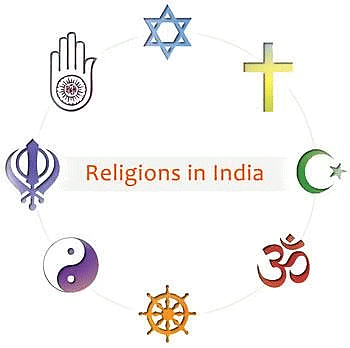
Hinduism
- Hinduism, a major religion in India, encompasses diverse cults and sects and derives its name from the people living near the River Indus.
- Its fundamental principles stem from ancient religious philosophies predating Vedic times.
- Purushartha is a crucial concept in Hinduism, representing four main goals of human life:
(i) Artha (prosperity)
(ii) Kama (pleasure)
(iii) Dharma (morality), and
(iv) Moksha (spiritual liberation).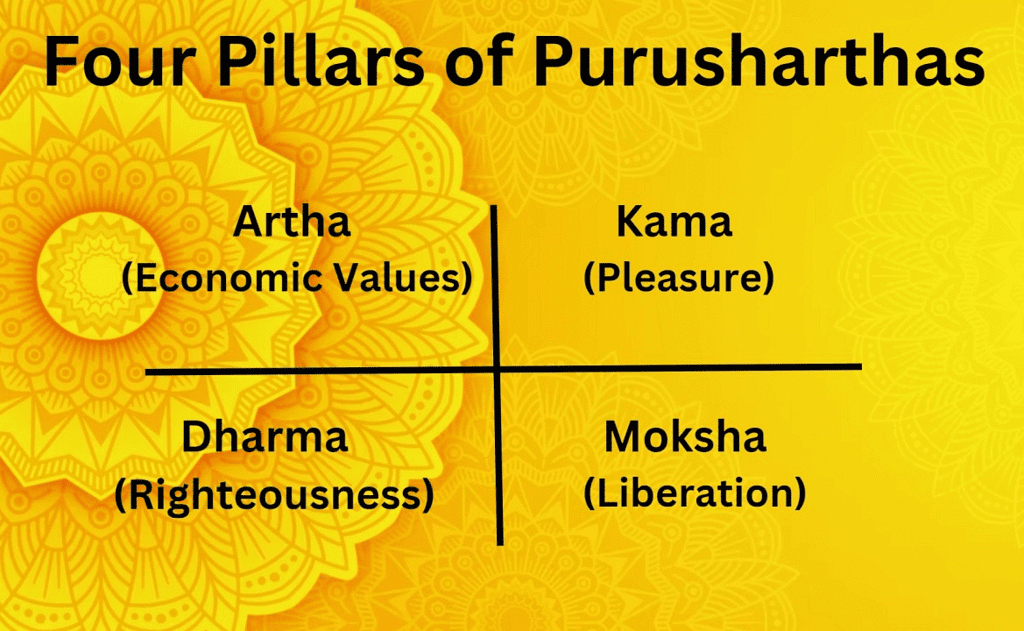
- These goals are seen as essential for a fulfilling life, with Dharma prioritized over Artha and Kama, and Moksha considered the ultimate aim.
- Hindu tradition divides life into four stages:
(i) brahmachari (student),
(ii) grihastha (householder),
(iii) vanaprastha (hermit), and
(iv) sannyasi (ascetic), with a focus on spiritual pursuit after the householder stage. - Hinduism acknowledges debts (rinas) owed to various factors like Gods, sages, and ancestors, emphasizing gratitude and awareness of duties. Major debts include deva rina (to Gods), rishi rina (to sages), and pitrarina (to ancestors).
Four Sects under Hinduism
- Vaishnavism: Followers consider Vishnu as the Supreme Lord. The tradition, also known as Krishnaism, has traceable roots to the 1st millennium BC. Vaishnavism comprises many sampradayas or sub-schools.
- Shaivism: It considers Shiva as the Supreme Lord. Shaivism traces its origin before Vaishnavism, dating back to the 2nd millennium BC in the form of the Vedic deity Rudra.
 Four Sects under Hinduism
Four Sects under Hinduism - Shaktism: It considers feminine power and the Devi or goddess as supreme. Shaktism is known for its various sub-traditions of Tantra.
- Smartism: Based on the teachings of the Puranas, Smartism followers believe in the domestic worship of five shrines with five deities, all treated as equal: Shiva, Shakti, Ganesh, Vishnu, and Surya. Smartism accepts two concepts of Brahman, namely Saguna Brahman (Brahman with attributes) and Nirguna Brahman (Brahman without attributes).
Under these four major traditions, there are various sub-sects or Sampradayas.
Prominent Sub-sects under Vaishnavism
(A) Varkari Panth
- Devotees worship Lord Vishnu, particularly as Vithoba, and focus their worship at the Vithoba Temple in Pandharpur, Maharashtra.
- They abstain strictly from alcohol and tobacco.
(B) Ramanandi Sampradaya
- Followers follow the teachings of Ramananda, an Advaita scholar, and worship Rama, an incarnation of Vishnu.
- They are known as Ramanandis, Vairagis, or Bairagis and form the largest monastic group within Hinduism.
(C) Brahma Sampradaya
- Founded by Madhvacharya, this sect worships Lord Vishnu as Para-Brahma or Universal Creator based on Dvaita Vedanta philosophy.
- Gaudiya Vaishnavism, associated with Chaitanya Mahaprabhu, belongs to this tradition, including ISKCON.
 Madhvacharya
Madhvacharya
(D) Pushtimarg Sampradaya
- Established by Vallabhacharya around 1500 AD, this Vaishnav sect emphasizes pure love for Lord Krishna, with the belief in one ultimate truth, Brahm.
(E) Nimbarka Sampradaya
- Also known as Hamsa, Kumara, or Sanakadi Sampradaya, followers worship Radha and Krishna.
- Founded by Nimbarka, it is rooted in Vaishnava Bhedabheda theology, which combines aspects of dualism and non-dualism.
Prominent Sub-sects under Shaivism
(A) Nath Panthi
- Also called Siddha Siddhanta, followers of Gorakhnath and Matsyendranath worship Adinath, a form of Shiva.
- They practice Hatha Yoga to transform the body and achieve self-realization.
- Monks dress as wandering ascetics, wearing loin cloths, dhotis, ashes, dreadlocks, and keep a sacred fire called dhuni.
(B) Lingayatism
- Also known as Veershaivism, it's a Shaivite tradition focusing on monotheistic worship of Lord Shiva in the form of linga.
- Founded by Basava in the 12th century AD, it rejects the Vedas and the caste system.
(C) Dashanami Sanyasis
- Followers of Adi Shankaracharya's Advaita Vedanta tradition, divided into 10 groups.
- They are monks known as Dash Nam Sanyasis.Basava
(D) Aghoris
- Devotees of Shiva as Bhairava, seeking salvation from reincarnation through extreme practices in cremation grounds.
- They belong to the Kapalika tradition, the only surviving sect derived from Tantric, non-Puranic Shaivism.
(E) Siddhars or Siddhas
- Mystics from Tamil Nadu, known as saints, doctors, and alchemists.
- They achieve spiritual perfection through secret rasayanas, believed to have eight special powers and are founders of Varmam, a martial art and medical treatment.
Other Prominent Hindu Movements/Schools related to Vaishnavism/Shaivism
(A) Pancharatra
- A Hindu religious movement systematized by Shandilya, originating in the late 3rd century BC.
- Members worshiped Narayana and various avatars of Vishnu.
- It later merged with the Bhagavata tradition, leading to the development of Vaishnavism.
(B) Tantrism
- A movement within Hinduism and Buddhism emphasizing magic rituals and mysticism.
- Developed in India from the 1st millennium AD. Vajrayana traditions of Buddhism include tantric ideas and practices, and Tantrism influenced Brahmanas and Jainism significantly.
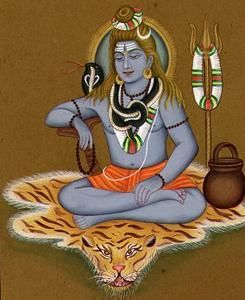 Lord Shiva
Lord Shiva
(C) Pashupata Shaivism
- The oldest major Shaivite school, with its philosophy systematized by Nakulisa in the 2nd century AD.
- Main texts include Pasupatasutra and Ganakarika. It was a devotional (bhakti) and ascetic movement.
(D) Kashmiri Shaivism (or Traika Shaivism)
- Developed in Kashmir after the 8th century AD, flourishing across India.
- Vasugupta wrote Shiva Sutras and its commentary Spanda Karikas, important texts of Kashmiri Shaivism.
- Pratyabhijna is the monistic and theistic school of philosophy originating in Kashmiri Shaivism.
Other Hindu Traditions
Shrautism
- Nambudiri Brahmins are traditional Brahmins in Kerala following Purva-Mimamsa philosophy, emphasizing Vedic rituals like yajna.
- They are known for preserving ancient Somayaga and Agnicayana ceremonies.
(A) Bhakti Movement
- Medieval transformation of Hinduism in North India, emphasizing devotion (Bhakti) to Gods.
- Saints translated Sanskrit texts into vernacular languages and spread Bhakti among the masses.
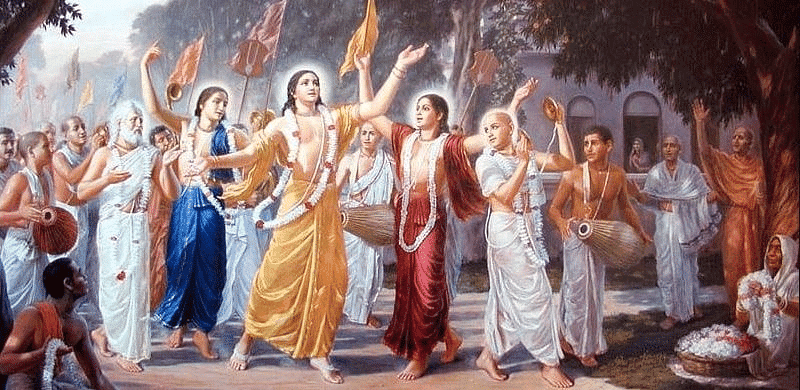 Bhakti Movement
Bhakti Movement
(B) Vaishnavite Movement
- Dominant in North India until the late 13th century, focused on devotion to Vishnu.
- Alvars, saints devoted to Vishnu, composed songs collected into prabandhas, with hymns compiled into the Divya Prabandha.
- Notable female saint poet Andal emerged among the 12 Tamil Alvars.
(C) Shaivite Movement
- Devotion to Shiva in South India, led by saints known as Nayanars.
- Their hymns, compiled by Nambiyandar Nambi into the Tirumurai, contributed to the movement's influence.
(D) Modern Period Reform Movements
- Addressed ritualistic aspects and social issues in Hinduism, including Brahmin dominance, regressive practices like sati and child marriage, and caste discrimination.
- Initiatives such as the Brahma Samaj, Arya Samaj, and Ramakrishna Movement, led by Swami Vivekananda, emerged influenced by British and Western ideals of equality.Question for Nitin Singhania Summary: Religion in India-3Try yourself:Which Vaishnavite sect worships Lord Krishna and emphasizes pure love for him?View Solution
Shramana Schools
The term "Shramana" denotes individuals engaged in acts of austerity and asceticism for noble or religious purposes. It encompasses various Indian religious movements running parallel to Vedic traditions. The Shramana schools include:
- Jainism
- Buddhism
- Ajivika
- Ajnana
- Charvaka
All the aforementioned schools are part of the Nastika or heterodox school of philosophy.
Ajivikas
- Founded by Makkhali Gosala in the 5th century BC, Ajivika school believes in Niyati (fate) doctrine, asserting absolute determinism without free will, rendering karma irrelevant.
- Rooted in atom theory, Ajivikas live an ascetic lifestyle, devoid of clothing and material possessions.
- They hold atheistic views, opposing Buddhism and Jainism, rejecting the concept of karma.Makkhali Gosala
- Ajivikas believe in the existence of a material soul (atman) in every living being, similar to Jainism.
- Notable followers include Bindusara in the 4th century BC, with Shravasti in Uttar Pradesh recognized as their center.
- Mentioned in Ashoka's seventh pillar edicts, Ajivikas have lost prominence, with their texts nonexistent in the present era.
Ajnana Sect
- The Ajnana sect adopted radical skepticism, claiming that gaining knowledge about nature is impossible and even if possible, it's useless for attaining salvation.
- Emerging as a major competitor to Jainism and Buddhism, the sect focused on refuting knowledge.
- Its followers were often seen as ignorant because they believed that 'Ignorance is Best.'Question for Nitin Singhania Summary: Religion in India-3Try yourself:What are the Five Pillars of Islam?View Solution
Islam
- Islam, the world's second-largest religion, originated in the Arabian Peninsula in the 7th century AD and spread globally.
- 'Islam' means 'submission' to God, and followers, called Muslims, follow the teachings of 3, the final messenger in a lineage including Abraham and Moses.
- Muslims and Christians share Abraham as a common ancestor, making them part of the Abrahamic Religions.
- Core beliefs include the oneness of Allah and the belief in Prophet Muhammad as the final messenger.
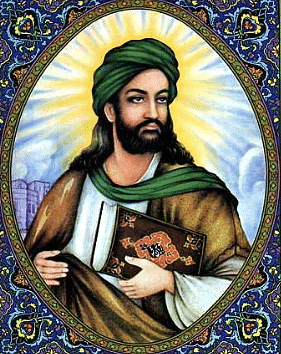 Prophet Muhammad
Prophet Muhammad - The Five Pillars of Islam are
(i) Shahada (Profession of Faith)
(ii) Salat (Prayer),
(iii) Zakat (Almsgiving),
(iv) Sawn (Fasting during Ramadan), and
(v) Hajj (Pilgrimage to Mecca). - Muslims believe in the Day of Judgement, where deeds are judged, leading to either heaven or hell.
- Obligatory practices include offering namaz (prayer), Friday prayer (Jummah namaz), and fasting during Ramadan, followed by Eid celebrations.
- Charity, known as zakat, involves giving a portion of earnings to the needy.
- Islam has two major divisions:
(i) Shia (supporters of Ali)
(ii) Sunni (followers of the Sunnah),
differing on Prophet Muhammad's successor. - Significant movements in Islam include:-
(i) Faraizi Movement led by Haji Shariatullah in early 19th century.
(ii) Ahmadiyya Movement by Mirza Ghulam Ahmad in late 19th century.
(iii) Tariqah-i-Muhammadiya Movement by Sayyid Ahmad Barelwi in the 19th century, and
(iv) Advocacy for modern education by Sir Syed Ahmad Khan.
Christianity
- Christianity, the world's most practiced religion, centers on the life, teachings, death, and resurrection of Jesus Christ.
- Christians believe in the Godhead consisting of the Father (God), the Son (Jesus Christ), and the Holy Spirit, viewing Jesus as the messiah sent by God to save the world.
- The Bible, Christianity's holy book, contains 66 books originally written in Hebrew, Greek, and Aramaic, including the Old Testament and the New Testament narrating Jesus's life, teachings, and prophecies.
- The cross symbolizes Christianity, with Jesus born to a Jewish virgin, Mary, in Bethlehem, growing up in Nazareth, and using parables in teachings.
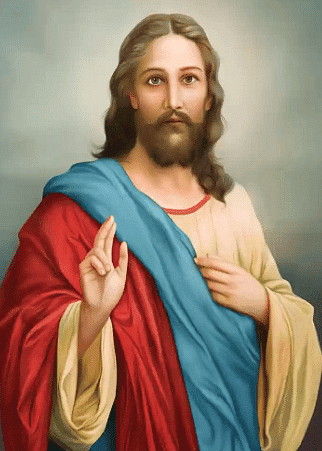 Jesus Christ
Jesus Christ - Early Christians faced persecution but gained tolerance after Roman Emperor Constantine's conversion to Christianity in the 4th century AD.
- Christianity has three main branches:
(i) Catholic
(ii) Protestant, and
(iii) Orthodox, each with distinct governing structures and denominations. - Introduced in 52 AD by Thomas the Apostle, Christianity later thrived during British rule in India, with Christian missionaries contributing to education and language growth.
- India's third-largest religion, Christianity has around 3 crore followers, with Roman Catholics being the majority, particularly in Kerala, Nagaland, Mizoram, and Meghalaya.Question for Nitin Singhania Summary: Religion in India-3Try yourself:Which major religions are practiced in India?View Solution
Sikhism
- Sikhism's history starts with Guru Nanak (1469-1539), who offered an organized alternative to Hinduism, emphasizing congregational worship and communal dining.
- Guru Nanak promoted salvation through service and community welfare instead of idol worship or renunciation, encouraging followers to lead practical lives and serve others, including through practices like the community kitchen (langar).
- Over 239 years, Sikh Gurus served as spiritual leaders, focusing on both spiritual and moral well-being. Guru Angad introduced the Gurmukhi script, while Guru Arjan Dev compiled the Adi Granth Sahib.
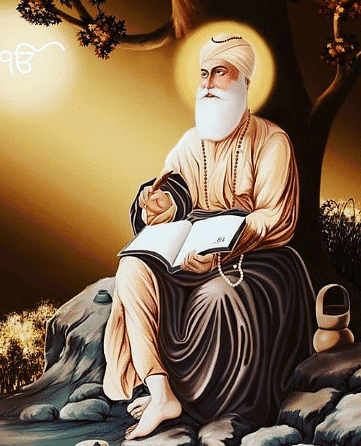 Guru Nanak Dev Ji
Guru Nanak Dev Ji - Mughal-Sikh relations deteriorated after Guru Arjan Dev's execution, leading to conflicts and the militarization of Sikhs under Guru Hargobind, who symbolized spiritual and temporal authority with two swords and constructed the Akal Takht and Lohagarh Fort.
- Later Gurus like Guru Har Rai and Guru Har Krishan faced conflicts and detention under Aurangzeb, while Guru Tegh Bahadur sought sovereign authority for Sikhs, resulting in his execution in 1675.
- Guru Gobind Singh ended personal guruship, transferring authority to Guru Granth Sahib and Guru Panth, and established the Khalsa in 1699, baptizing Sikh men as 'Singh' and women as 'Kaur.'
- Khalsa Sikhs followed a dress code and wore the five k's (kachcha, kesh, kangha, kirpan, and kara).
- Sikhism views God as a universal entity, genderless and self-illuminated, with popular names including Waheguru, Akal Purakh, Ek Onkar, and Satnam.
- The Three Pillars of Sikhism, given by Guru Nanak, involve focusing on God (Naam Japna), honest living (Kirat Karni), and sharing with others (Vand Chakna).
Zoroastrianism
- Zoroastrianism, a 7th-century religion originating in Persia, was founded by the Prophet Zarathustra around the 6th century BC.
- It's a monotheistic faith centered on one eternal god named Ahura Mazda, symbolizing just behavior and goodness, while an opposing spirit named Angra Mainyu represents evil.
- Zoroastrians first encountered India between the 8th and 10th centuries AD, fleeing from Islamic invasions in Iran. Known as Parsis and Iranis in India, Parsis form the larger community, residing mainly in Mumbai, Goa, and Ahmedabad.
- Their sacred text, the Zend Avesta, includes 17 sacred songs (gathas) and the Ahuna Vairyo (sacred chant), attributed to Zarathustra himself, divided into five parts like Yasna, Vendidad, Yashts, Khordeh Avesta, and Gathas
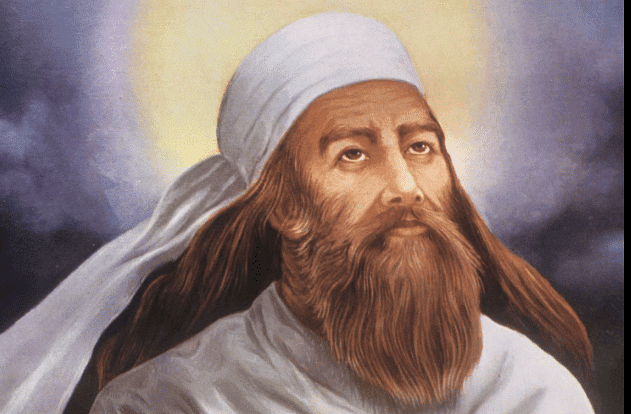 Prophet Zarathustra
Prophet Zarathustra - Zoroastrians worship fire and consider it and earth as sacred elements, practicing exposure of dead bodies to vultures in open spaces called 'dakhma' or towers of silence, although some now opt for burial due to the Indian vulture crisis.
- Fire temples, known as Atash Behram, are rare, with only eight known temples in the entire country.
- Parsis follow three major calendar forms:-
(i) Shahenshahi,
(ii) Qadimi,
(iii) Fasli, each with its own dating system. - The Qissa-i Sanjan narrates the migration and settlement of Zoroastrians (Parsis) in the Indian subcontinent, ending with the establishment of the fire temple at Sanjan, Gujarat.Question for Nitin Singhania Summary: Religion in India-3Try yourself:Which of the following is a major religion in India that encompasses diverse cults and sects?View Solution
Judaism
- Judaism, one of the oldest religions, believes in one God, Yahweh, established by Abraham, with Jews as its adherents.
- Jews have faced persecution across centuries, notably under Hitler's regime, resulting in the systematic torture and extermination of millions in Germany and Europe.
- Their beliefs and practices are guided by the Torah, consisting of the first five books of the Tanakh, and Halakhah, which regulates religious observances and daily life.
- Synagogues serve as prayer halls for religious services like Eliyahu-hanavi (thanksgiving to Elijah the Prophet).
- Abraham, Isaac, and Jacob are considered ancestors of all Jews, with Moses receiving the Ten Commandments on Mount Sinai, guiding the Israelites.
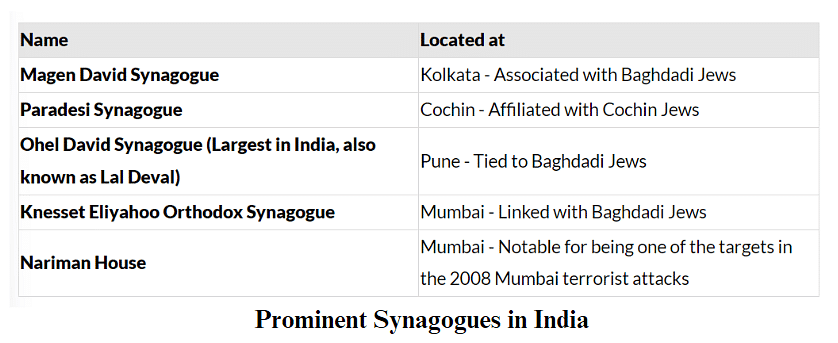
- Male Jews wear a tsisith or prayer shawl during prayers, anticipating a Day of Judgment where the Messiah escorts the righteous to heaven and condemns evildoers to hell.
- India hosts five major Jewish communities:-
(i) Cochin Jews
(ii) Bene Israel Jews
(iii) Baghdadi Jews
(iv) Bnei Menashe, and
(v) Bene Ephraim - The Bene Israel community is the largest Jewish community in India, with other communities speaking Malayalam, Marathi, Telugu, and originating from West Asia and the India-Myanmar border.
|
228 videos|855 docs|219 tests
|
FAQs on Nitin Singhania Summary: Religion in India-3 - History for UPSC CSE
| 1. What is the constitutional position of religion in India? |  |
| 2. What are the major religions in India besides Hinduism? |  |
| 3. What are the Shramana Schools in India? |  |
| 4. How does the Constitution of India protect religious freedom? |  |
| 5. What is the significance of religion in Indian society and culture? |  |





















